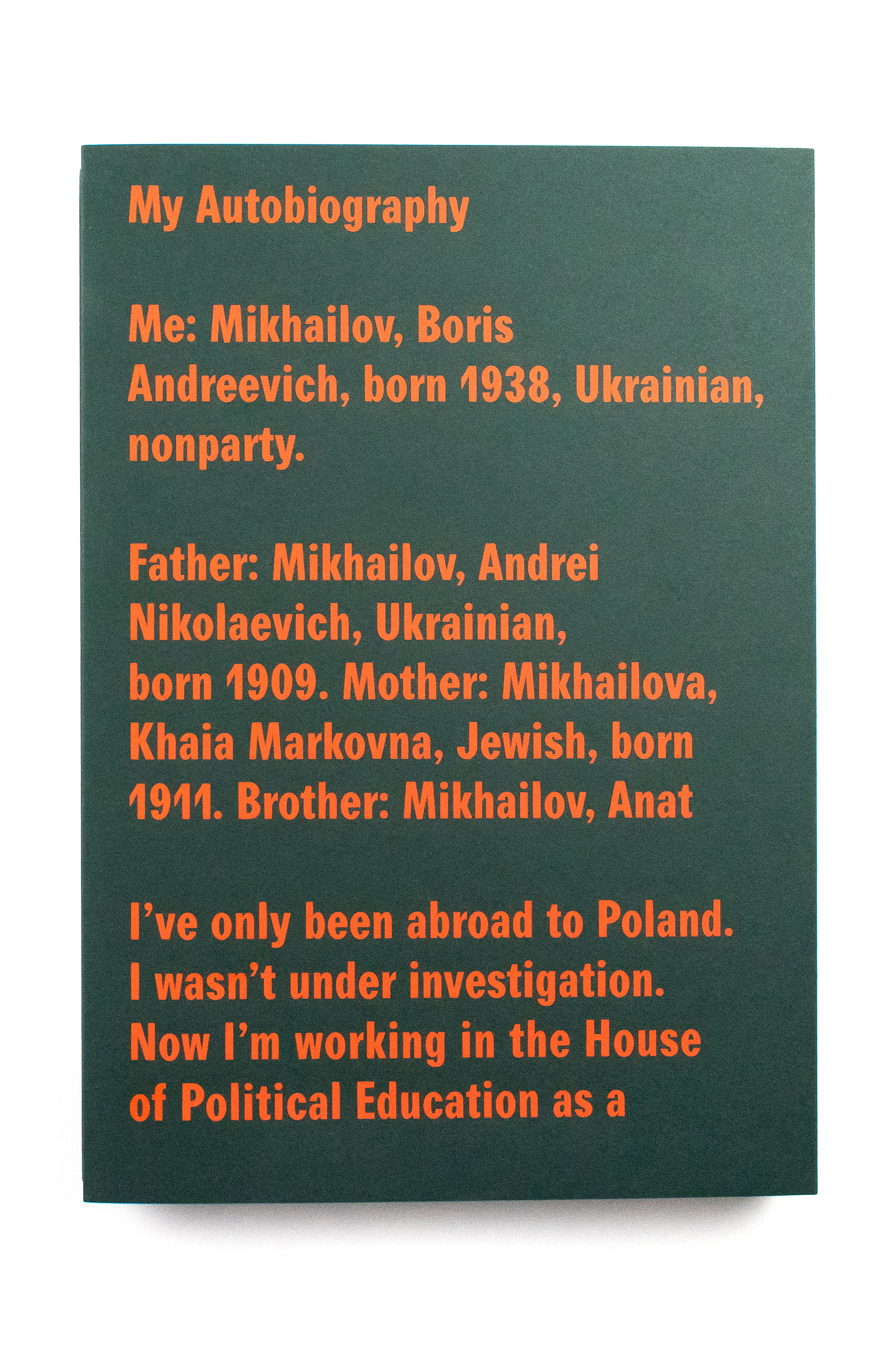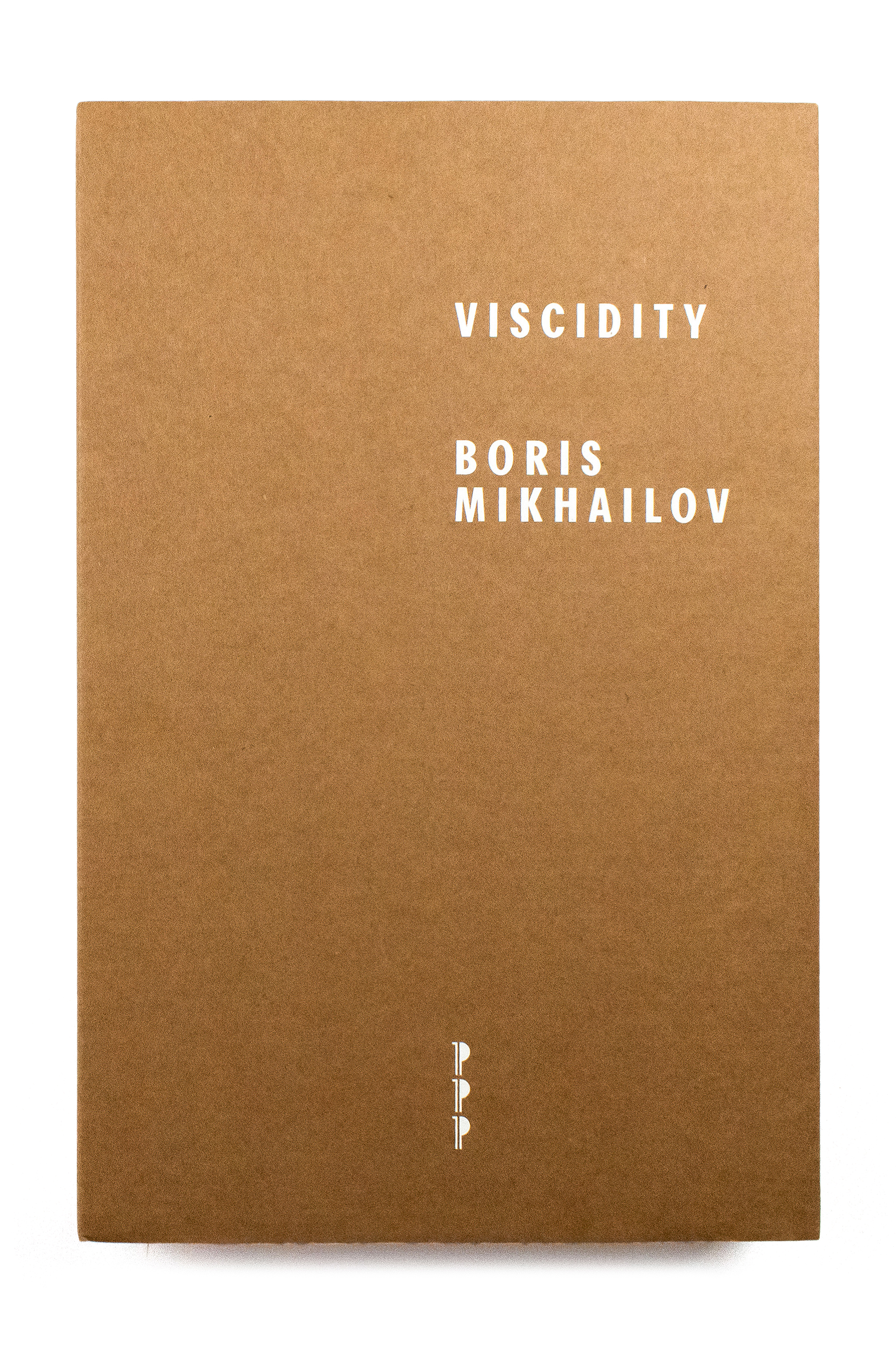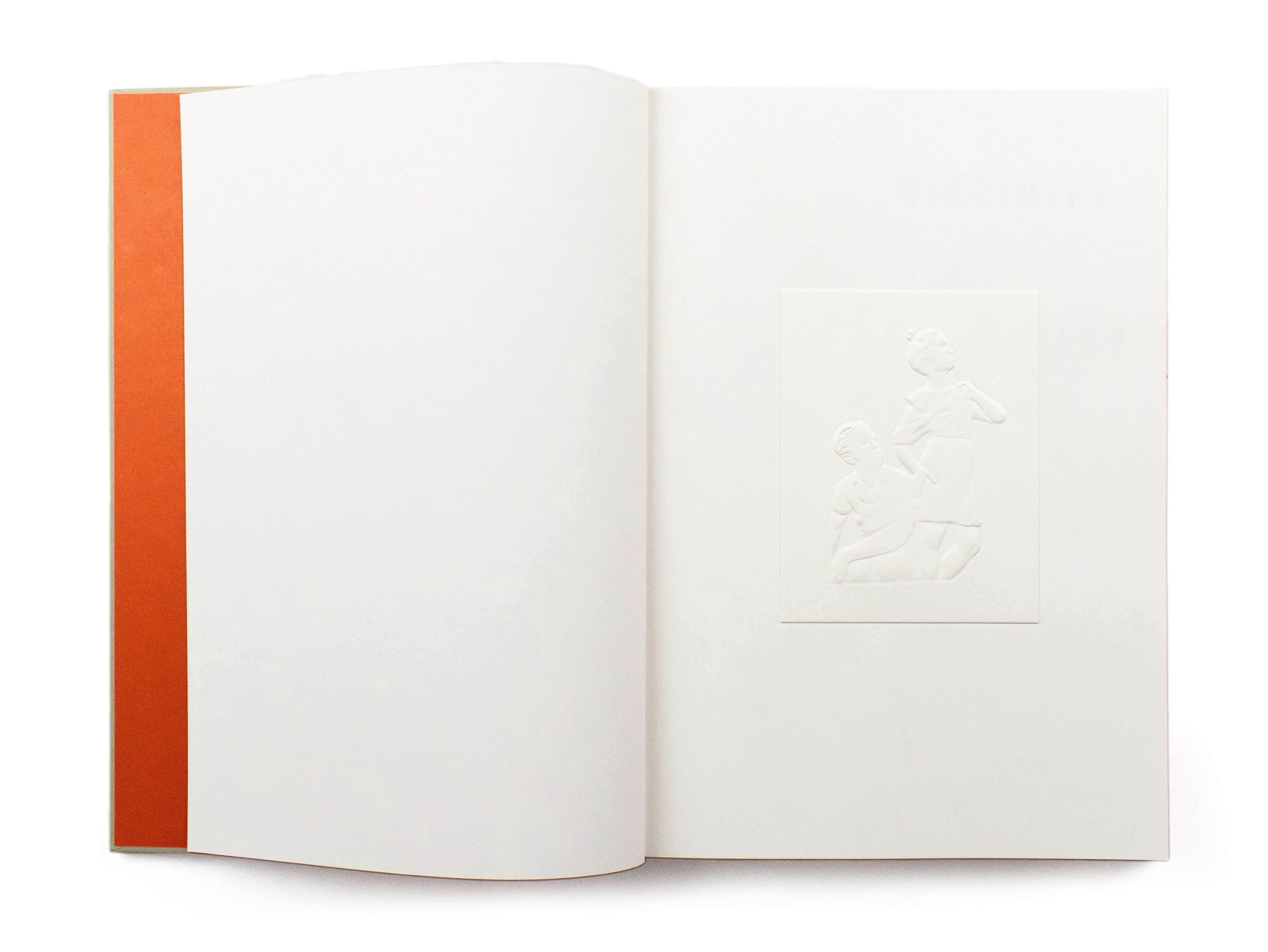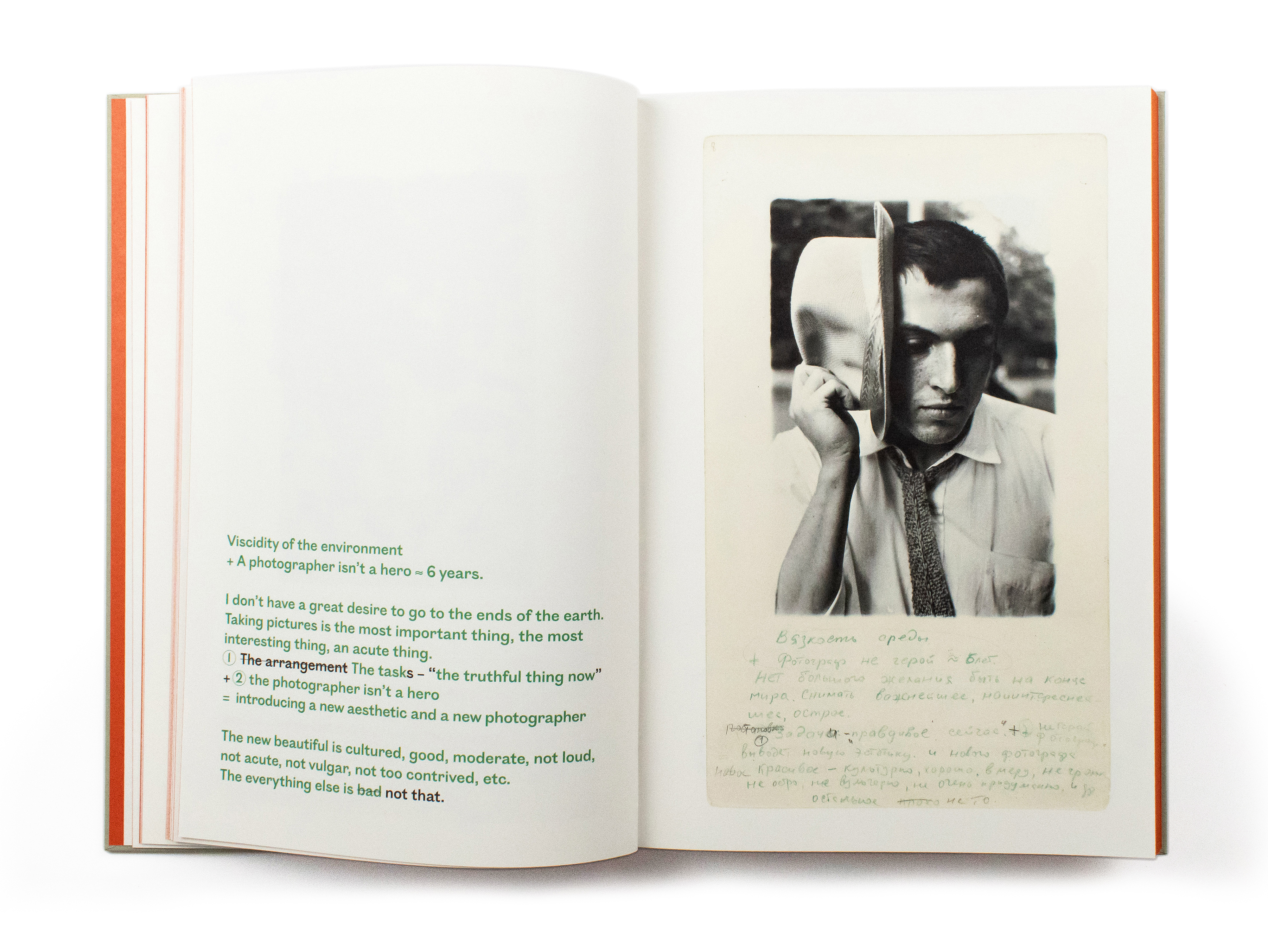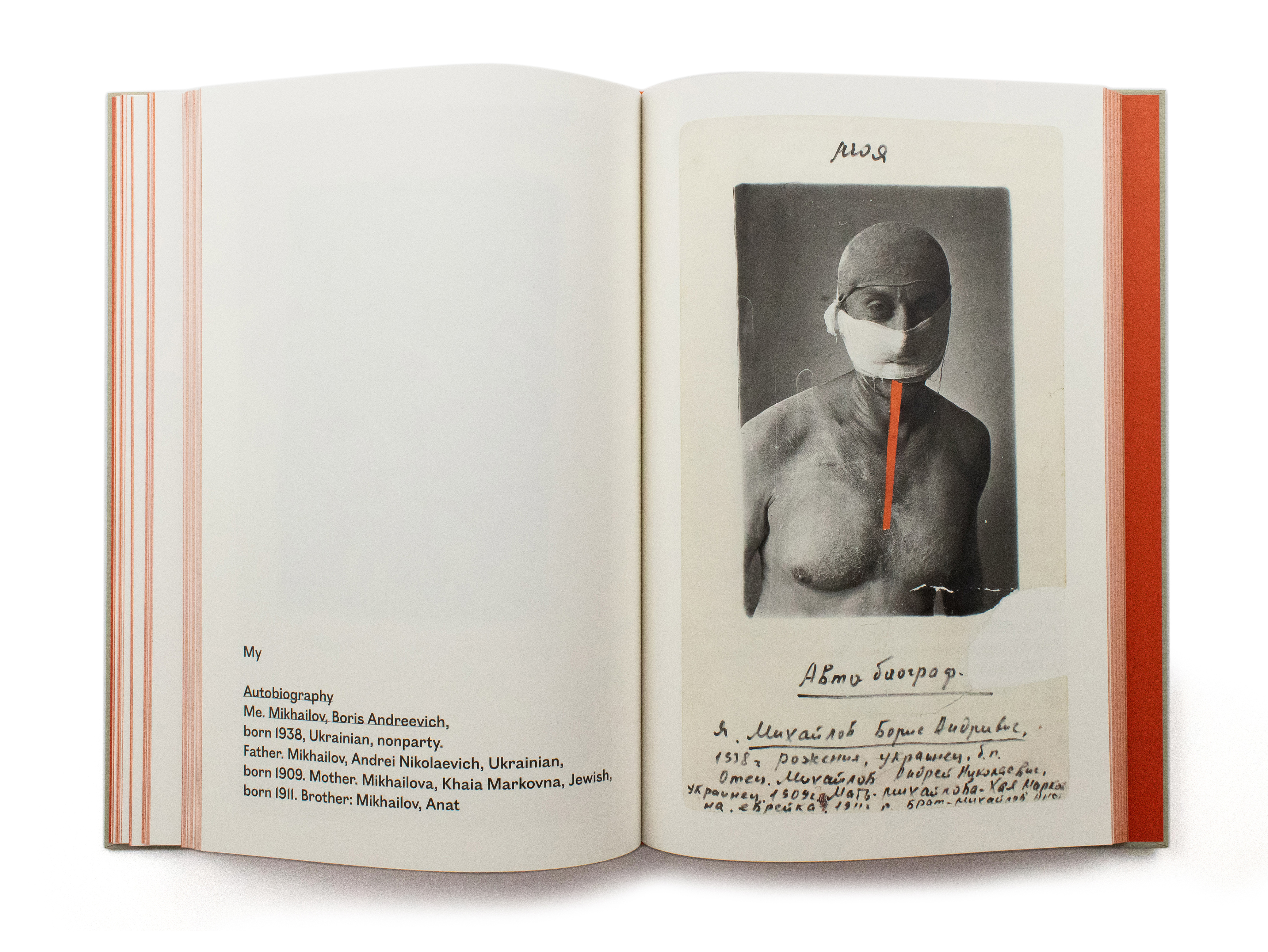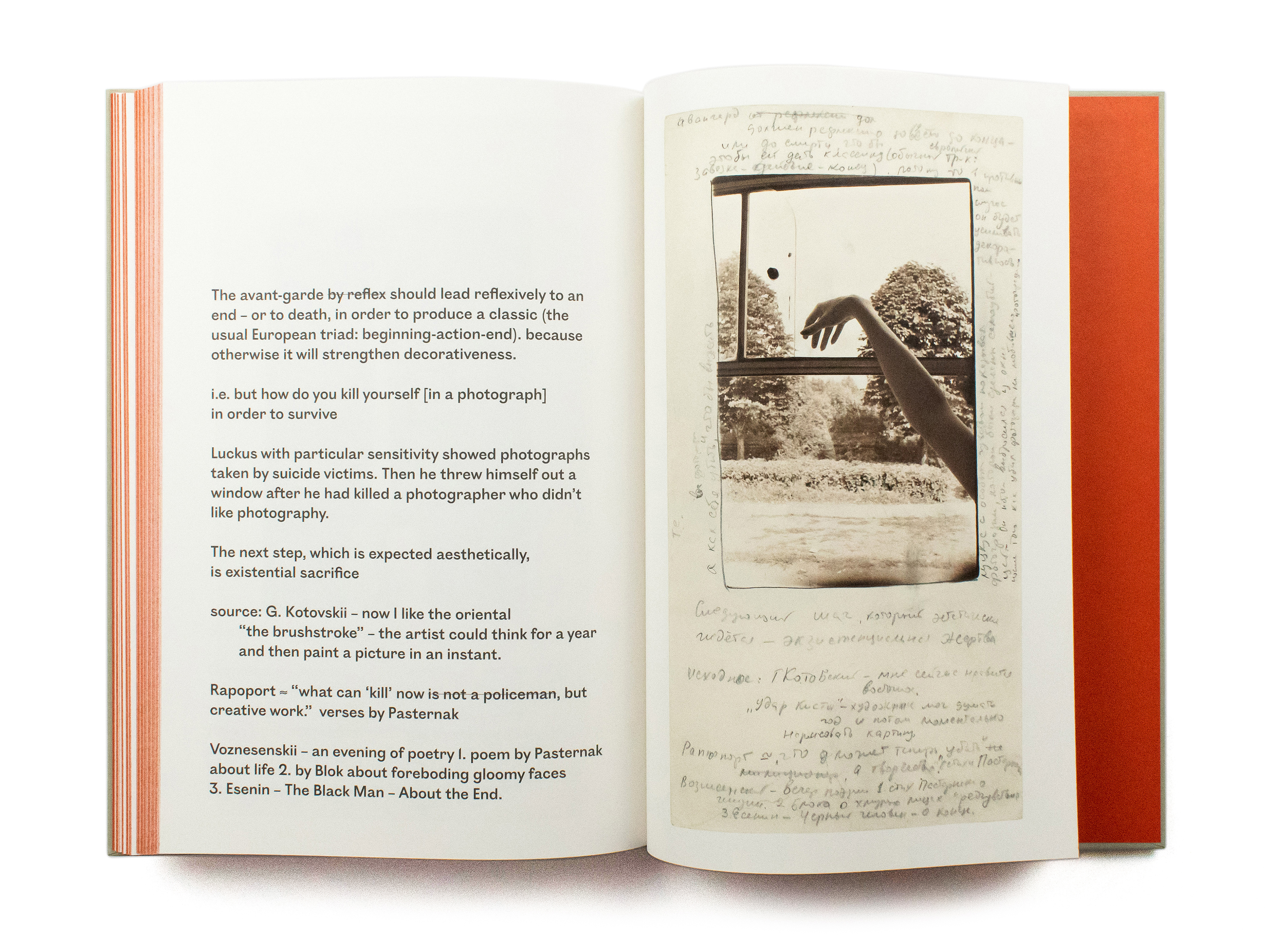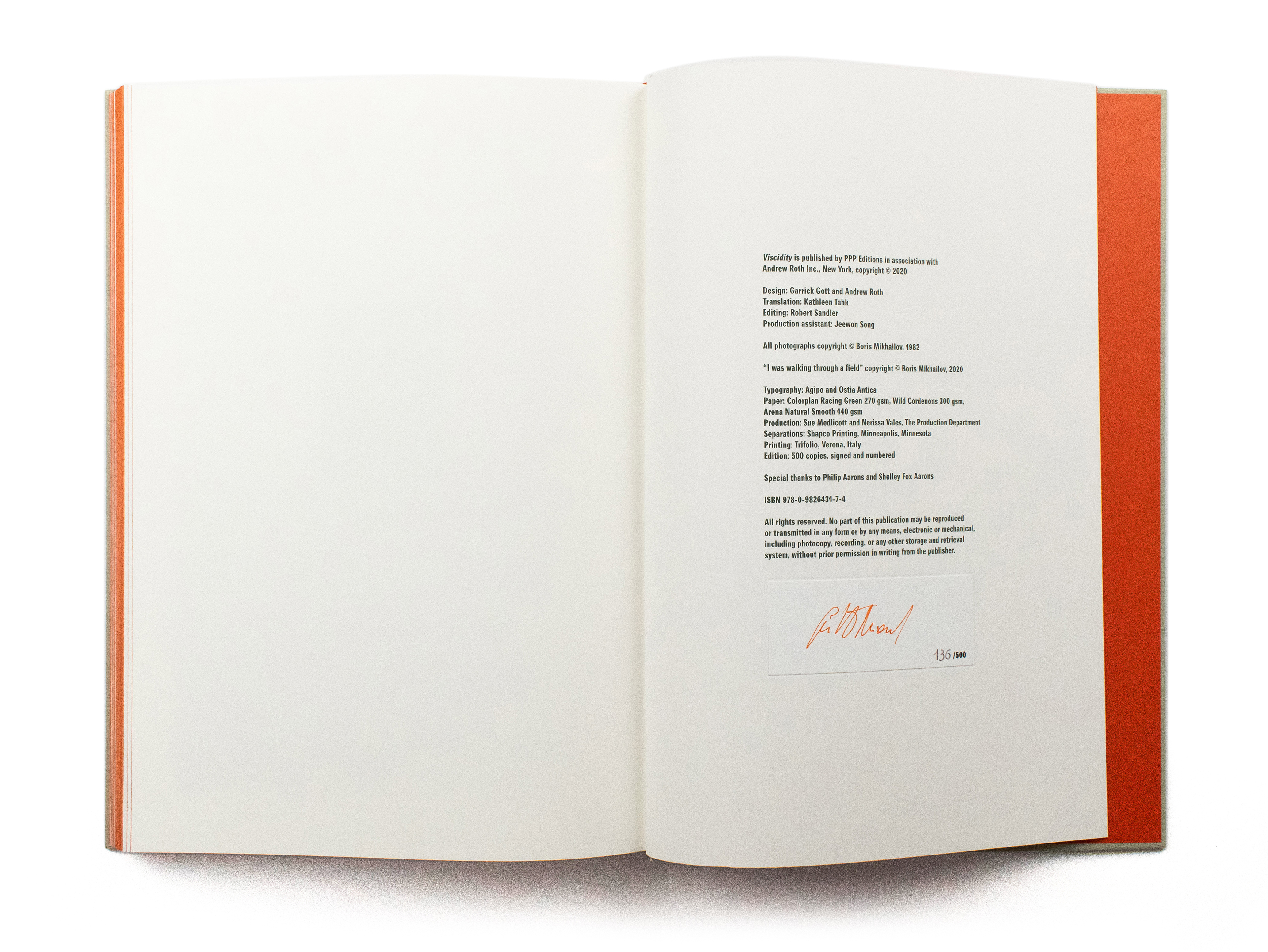Viscidity
Boris Mikhailov
The photographs featured in Viscidity by Boris Mikhailov were completed and sequenced in Kharkov in 1982 but only now published as a book. Reproduced at their original scale, we have added translations from the Russian to English. In addition, the book features “I was walking through a field,” an original bilingual essay by Mikhailov illuminating the history of the work and written specially for this edition.
One of three early and critical image-text works, Viscidity was completed after Horizontal Pictures and Vertical Calendars (1978-1980) and shortly before Unfinished Dissertation (1984). As Mikhailov states: “At first the texts tautologically repeated what was visible in the image, as though they were simply drawing attention to the photograph (the first book)… gradually the texts changed and became poetic and deeper (the second book)… then I added quotations in addition to my own reflections on photography (the third book).”
Viscidity was produced during a time of “deep political stagnation. Nothing is happening — nothing at all is interesting … There was a kind of certainty that society was at the threshold of something unknown, something everyone was anticipating. Many people felt this way.”
Mikhailov is best known for provocative self-portraits and politically charged color photographs, from the earliest works in Red Series (1968–75) to the gut wrenching yet seductive images of the homeless in the Soviet Union, published in Case Studies (Scalo, 1999). A prolific and experimental artist, Mikhailov’s work rests naturally beside the most respected conceptual artists of his generation. Photographs from Viscidity have been exhibited widely throughout his career, most importantly in 2004 in the critically acclaimed exhibition and accompanying catalogue at the Serralves Museum in Portugal by Margarita and Victor Tupitsyn, Verbal Photography: Ilya Kabakov and Boris Mikhailov and the Moscow Archive of New Art.
PPP Editions, 2020
First edition; 500 signed and numbered copies, the entire edition.
Large 4to.; color and black-and-white reproductions; blind-debossed frontispiece, tipped in; illustrated paper over boards; silkscreened dust jacket; housed in a silkscreened cardboard mailer.
